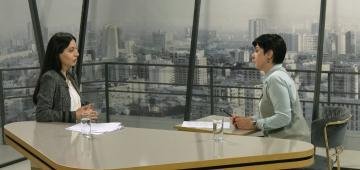 |
Church-state legal relations and their violations in our timeAccording to Article 17 of the Constitution of the Republic of Armenia, “Freedom of activity of religious organizations is guaranteed in the Republic of Armenia. Religious organizations are separate from the state.” What restrictions does the law provide for both a state body and an individual official, as well as a religious organization and its representative? Anna Sargsyan spoke with lawyer Anna Sardaryan |
 |
Church-state legal relations and their violations in our timeAccording to Article 17 of the Constitution of the Republic of Armenia, “Freedom of activity of religious organizations is guaranteed in the Republic of Armenia. Religious organizations are separate from the state.” What restrictions does the law provide for both a state body and an individual official, as well as a religious organization and its representative? Anna Sargsyan spoke with lawyer Anna Sardaryan |
 |
First half of 2025In Azerbaijan, including Artsakh, about half a million Armenians lived during the Soviet years. In the 90s, all Armenians were expelled from Azerbaijan and their property was confiscated. Why does the Armenian side not demand compensation? Why are claims against Azerbaijan in international courts important? What topics were discussed by the expert guests of the "Third Millennium" during the first six months of 2025? |
 |
Memory and securityCollective memory is a security tool that has an important component: what to forget. That is why Azerbaijan is erasing and completely destroying any symbol of Artsakh's statehood. After annexing Artsakh, Azerbaijan was the first to destroy the institutions reminiscent of statehood. It is destroying and re-editing the evidence of Armenians' centuries-old life in Artsakh - churches and historical and cultural monuments. Why is collective memory part of security? Anna Sargsyan spoke with ethnographer Ruzanna Tsaturyan. |
 |
War on the science frontWill the peace treaty with Armenia force Azerbaijan to stop making pseudo-scientific publications about Yerevan being Azerbaijani, Armenians being guilty of environmental terrorism, occupation of Azerbaijani territories, and even the genocide of Jews, or will Azerbaijan stop appropriating Armenian cultural heritage? Anna Sargsyan discussed the topic with Gor Margaryan, an expert at the Geghard Scientific-Analytical Foundation, candidate of historical sciences. |
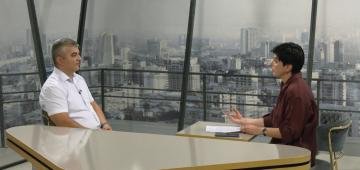 |
Azerbaijan accuses Armenians of genocide of JewsYerevan is Azerbaijani, Armenians are guilty of environmental terrorism, occupation of Azerbaijani territories, and even the genocide of Jews. The number of pseudoscientific articles by Azerbaijanis published in international scientific journals has increased significantly in recent years. The Geghard Foundation is responding as best it can by filing complaints with the editorial offices of the journals, at the same time, the foundation’s expert believes that this is not only a violation of scientific ethics by individual Azerbaijani scientists, but also part of Baku’s official policy, a tool of hybrid warfare against Armenia. Anna Sargsyan spoke with Gor Margaryan, an expert at the Geghard Scientific-Analytical Foundation, candidate of historical sciences. |
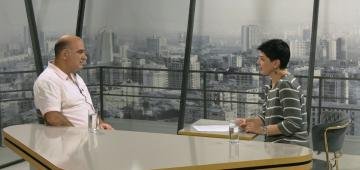 |
The memory of the 2020 war in Turkey, Azerbaijan and ArmeniaThe military success of Azerbaijan and Turkey in the 2020 war allowed these countries to promote antagonistic memory politics, and this may have a long-term impact on regional stability. Nevertheless, the Armenian case seems to inspire some hope that memory politics in the region is not completely doomed to eternal antagonism, but the question of what their new specific direction will be - cosmopolitan or agonistic - remains open. Anna Sargsyan spoke with ethnographer Arsen Hakobyan. |
 |
The myths and realities of economic growthHow does Armenia's economy survive? How does the average Armenian live? What do Yerevan's crowded cafes say and what do professional analyses say? Anna Sargsyan spoke with economist and head of the Tvyal.com organization Aghasi Tavadyan. |
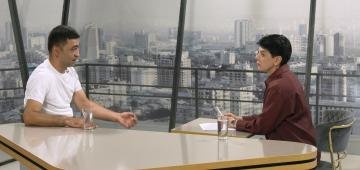 |
The "emigration program" of Artsakh residentsThe Council for the Protection of the Rights of Artsakh Citizens is raising the alarm that the state governance system in Armenia is applying double standards towards forcibly displaced Artsakh Armenians, indirectly encouraging emigration. Anna Sargsyan spoke with Council member Apres Margaryan. |
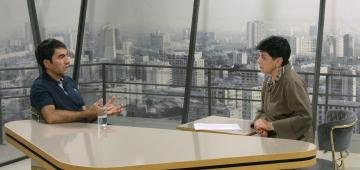 |
The art and law of politicsWhy is our society so irreconcilable? Is this a national character or political technology? Who is involved in politics? Can a church member engage in politics? Anna Sargsyan spoke with Doctor of Political Sciences, Professor Artur Atanesyan. |
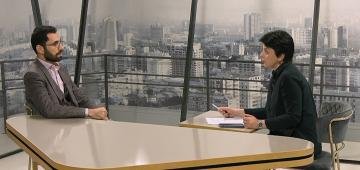 |
Who does religious law apply to, and what does canon law apply to?What is religious law and what is canon law? What restrictions are considered legitimate and by whom can they be imposed? Anna Sargsyan spoke with Vahe Torosyan, a candidate of legal sciences and a specialist in spiritual law. |
 |
The right of collective return of Artsakh residents is at riskThe "Union for the Protection of the Interests and Rights of the People of Artsakh" public organization calls for joint protection of the rights, safe return, and dignified future of the genocided people of Artsakh. Anna Sargsyan spoke with the President of the Union of Artsakh, former State Minister of the Republic of Artsakh, and former Human Rights Defender Artak Beglaryan. |

